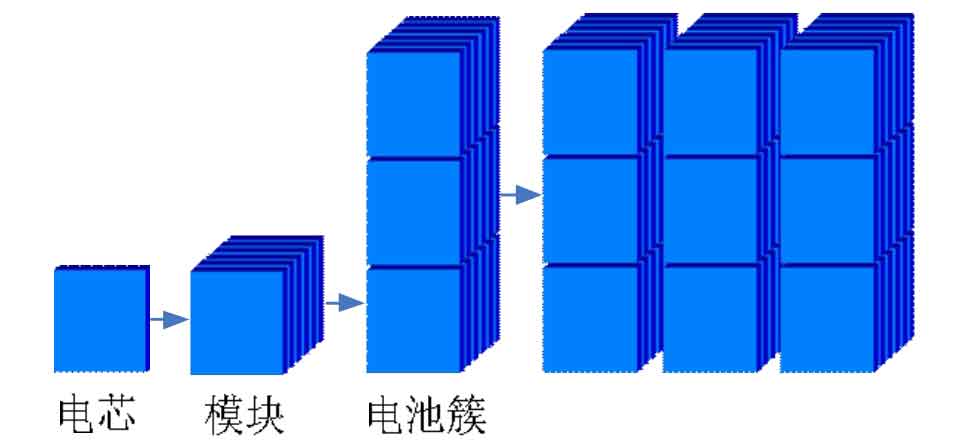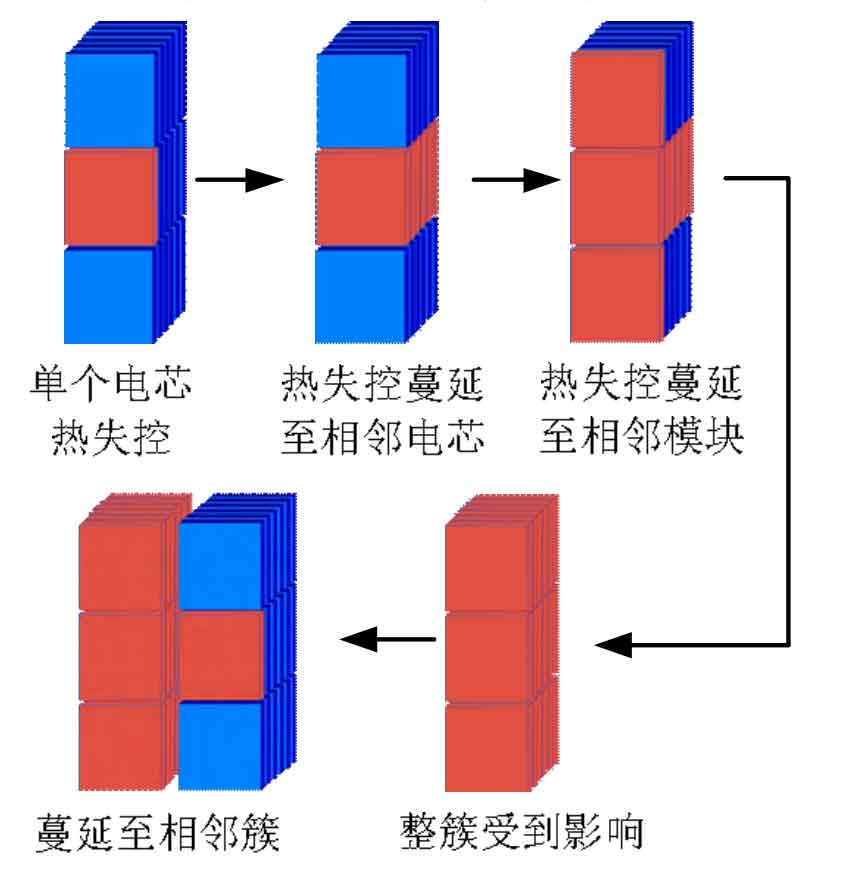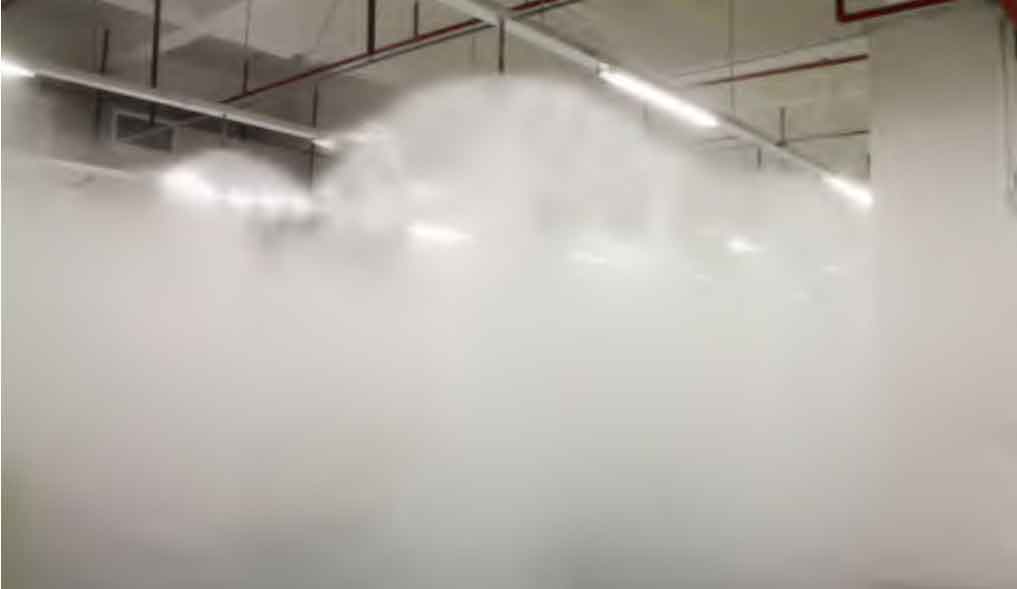The world is promoting the transition from fossil energy to renewable energy, and efficient energy storage systems are an essential part, with lithium-ion battery based energy storage systems being the most prominent. Lithium ion batteries are at the forefront of battery technology research and application due to their high energy density and long cycle life. It is precisely due to these advantages that lithium-ion batteries are rapidly replacing other types of batteries in many application scenarios. Examples of lithium-ion battery applications range from small personal electronic devices such as smartphones and smartwatches to large energy storage devices such as electric vehicles, solar power plants, and wind farms. Although lithium-ion batteries have many advantages, they have an inherent risk of thermal runaway, which can lead to the injection of harmful gases (flammable, toxic, or explosive), causing fires and explosions. This article focuses on various firefighting methods for suppressing fires in lithium-ion battery energy storage systems.
1.Mechanism of lithium-ion battery fire

Lithium batteries must go through a thermal runaway stage before they experience failure, fire, or even explosion. When the heat generated by the chemical exothermic reaction inside a lithium battery is not dissipated in a timely manner, causing the internal temperature of the battery to reach the temperature of the battery diaphragm damage, it will cause the electrode to come into direct contact with the electrolyte, releasing a large amount of heat and combustible gas in a short period of time, leading to the occurrence of fire or explosion. Common causes and consequences of thermal runaway. Unlike traditional fires, the thermal runaway of lithium batteries results in fires being fueled by internal chemical reactions that release heat and can continue to burn without oxygen supply or visible flames. In addition, the energy stored in lithium-ion battery energy storage systems and the dense arrangement of battery modules pose significant challenges to suppressing fires. Figure 1 shows that on July 30, 2021, one of the world’s largest battery energy storage systems, the Tesla Megapack energy storage project in Victoria, Australia, caught fire during testing. A 13 ton lithium-ion battery inside a container was completely ignited, and the fire burned for 4 days before being extinguished. The sudden fire of the Megapack energy storage project has once again sounded an alarm for the fire safety of the lithium battery energy storage system.

The layout of lithium-ion battery energy storage systems is a key factor in promoting the uncontrolled propagation of heat. As shown in Figure 2, a single lithium-ion battery cell is assembled into a battery module, which is stacked in a battery rack to form a battery cluster. The final series of battery clusters form the battery system. Heat transfer may be caused by the combustion of heat generated and released gases inside the battery. The main heat transfer pathway inside the battery module is through the shell of a single cell. The heat generated by a single cell fire may cause uncontrolled heating in adjacent batteries. For large lithium-ion battery energy storage systems, this phenomenon can spiral out of control and spread, affecting the entire module or battery cluster, The final impact on the entire battery system is shown in Figure 3.

2. Fire suppression methods
2.1 Water-based automatic sprinkler system
Lithium battery fires are essentially caused by thermal runaway, and cooling is a key aspect of firefighting methods. Due to the effective cooling characteristics of water, water-based automatic sprinkler systems are widely used for general commodity firefighting. However, the effectiveness of water-based automatic sprinkler systems applied to lithium-ion battery energy storage systems still needs further research. At present, there is still a gap between the overall effectiveness of water-based fire extinguishing systems in suppressing large-scale fires in lithium-ion battery based energy storage systems and laboratory data. The disadvantages of water-based fire extinguishing systems are as follows:
1) The high conductivity of water may cause a short circuit in the battery, leading to an additional risk of ignition.
2) To prevent thermal runaway and spread, it is necessary to consume a large amount of water to cool the battery below the critical temperature, resulting in a certain degree of water resource waste.
3) Water used in lithium-ion battery fires can increase the generation of exhaust gases and toxic gases such as CO, H2, and HF. Water can cause incomplete combustion of organic matter in lithium-ion batteries, resulting in the generation of toxic CO instead of CO2; When using water, H2 is released without combustion, increasing its concentration; Water reacts with phosphorus pentafluoride to generate HF.
4) Due to the dense installation structure of battery modules, once the water is stopped and the cooling effect cannot be achieved, the interior of the battery may catch fire again.
2.2 Water mist fire extinguishing system
Figure 4 shows the water mist fire extinguishing system. The fire extinguishing mechanism of fine water mist mainly includes heat absorption cooling, oxygen isolation suffocation, radiation heat barrier, and wetting effect. When a fire occurs in a lithium battery, the fine water mist nozzle immediately sprays out, directly acting on the surface of the flame, quickly achieving the effect of oxygen isolation and suffocation, thereby suppressing the combustion of the flame. Meanwhile, the particle size of fine water mist droplets is 1000 μ m. The droplet size of traditional sprinkler systems is approximately 5000 μ m. After being heated, fine water mist is easily vaporized, and this evaporation process will carry away a large amount of heat, quickly cooling the fire area. In laboratory scale lithium-ion battery fires, the water mist fire extinguishing system demonstrated excellent battery cooling and preventing reignition effects. Zhang L et al. found that adding surfactant and gel agent to the water mist system can also effectively reduce the amount of water required to extinguish fire and cool adjacent modules. Despite some known drawbacks of water mist fire extinguishing systems, such as the generation of harmful gases during use, the ideal extinguishing effect demonstrated in laboratory level fires has prompted more and more lithium battery manufacturers to choose water mist fire extinguishing systems.

2.3 Inert gas fire extinguishing system
Due to the low conductivity of inert gases, they evaporate completely after being used as fire extinguishing agents, have no residue, and are non polluting to the environment, making them widely used in live working situations such as electrical and electronic component units. Research has found that the non combustible and non combustible properties of inert gases such as N2, CO2, He have a suppressive effect on fires caused by thermal runaway of lithium-ion batteries. When a fire occurs in the lithium-ion battery energy storage system, the exhaust gas or smoke detection system is activated. The use of inert gases in a closed environment can quickly reduce the concentration of O2, thereby blocking the contact between combustibles and O2, achieving the purpose of suffocation and suppressing the continued spread of the fire. Inert gas fire extinguishing systems are different from water-based systems. Gas extinguishing agents can penetrate lithium-ion battery fires at a deeper level, but the cooling performance of the gas is poor and usually cannot prevent the spread of heat.
2.4 Cleaning agent fire extinguishing system
Clean agent systems based on halogenated hydrocarbons, such as Novec 1230, FM-200, and other “green” fire extinguishing systems, are gradually being recognized and widely used by fire management departments in various countries. The cleaning agent system fire extinguishing system can combine physical and chemical reaction processes to quickly and effectively eliminate heat energy and prevent the occurrence of fires. The physical properties of clean fire extinguishing agents are reflected in their ability to quickly cool the flame temperature during the molecular vaporization stage, and release free radicals during the chemical reaction process, which can ultimately prevent the chain reaction of combustion and may suppress fires caused by lithium-ion batteries in the early stages. Inert gas fire extinguishing systems pose a risk of hypoxia and suffocation during use. The main drawback of halogenated hydrocarbon cleaning agents is that they may form secondary toxic and corrosive products when exposed to high temperatures, posing a threat to the safety of firefighters.
3. Conclusion
At present, there is no single fire extinguishing method that can completely and effectively solve the fire problem of lithium-ion battery energy storage systems. For example, cleaning agents or inert gas systems based on halogenated hydrocarbons are not sufficient to prevent large-scale thermal runaway, while water-based fire extinguishing systems are not effective in responding to cell fires, and external short circuits can also increase the risk of damaging other unaffected batteries. In addition, both fire extinguishing systems generate toxic exhaust gas when used in lithium-ion battery fires.
A protective strategy based on early detection and suppression of thermal runaway propagation may be the best solution to suppress lithium battery fires. Due to the unique electrochemical characteristics of each lithium-ion battery energy storage system, the arrangement of battery modules and battery management strategies are different. Therefore, the case fire prevention method is crucial for the fire protection design of large lithium-ion battery energy storage systems. Before mastering reliable fire suppression techniques for specific lithium-ion battery energy storage systems, a case study method that combines suppressing lithium-ion battery fires, preventing thermal runaway propagation, and managing toxic gases may be the best way to suppress lithium-ion battery energy storage system fires.
